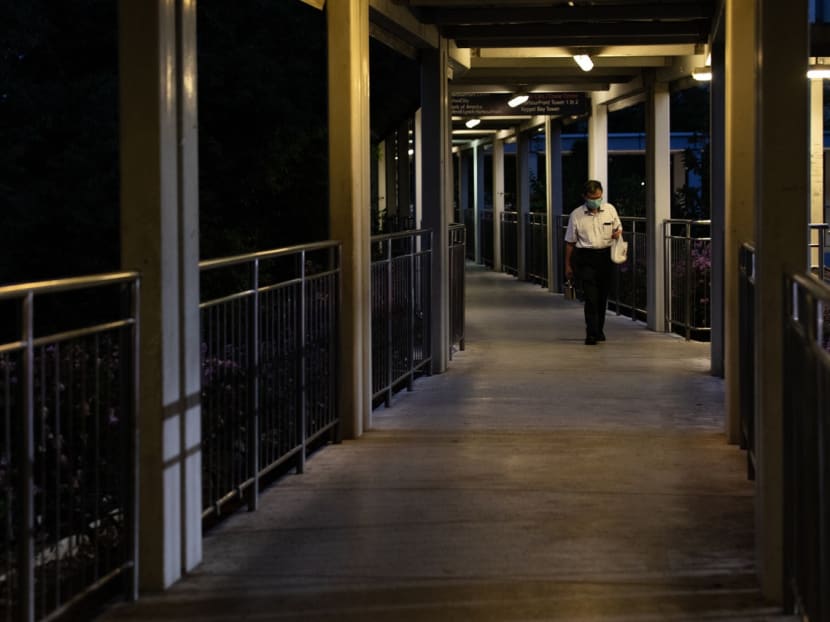Circuit breaker exit: S’pore on course to enter Phase 2 but don’t assume Phase 3 will follow, say epidemiologists
SINGAPORE — While the 18 new Covid-19 community cases reported on Friday (June 12) may have hit a new high, Singapore appears, for now, to remain on course to move into the second phase of reopening its economy by the end of the month, several infectious diseases experts said.

Based on the Covid-19 data so far, three infectious diseases experts said that Singapore has done just as they had predicted, or better than they had expected.
SINGAPORE — While the 18 new Covid-19 community cases reported on Friday (June 12) may have hit a new high, Singapore appears, for now, to remain on course to move into the second phase of reopening its economy by the end of the month, several infectious diseases experts said.
However, they cautioned against the assumption that the third phase will surely follow the second.
In the absence of a vaccine, an unhealthy rise in the number of cases could mean going back to this present first phase, or worse, the stricter measures seen in the circuit breaker, which was the period of stay-home curbs and a halt in non-essential businesses during April and May.
Dr Alex Cook, vice-dean of research at the National University of Singapore’s Saw Swee Hock School of Public Health, said: “(Another circuit breaker) is not inevitable but it is certainly a possibility, and we need to work together to avoid that, or at least delay it as long as possible.”
Addressing the spike in the daily community case count on Friday, the biostatistician said that it is not a concern yet as averages matter more than single-day figures. It will be an issue if the cases continue to rise for several days consecutively.
Of the 18 new patients, five were contacts of known cases and are in quarantine, another five were picked up through screening of workers in essential services or those working at foreign worker dormitories. The remaining eight are still being investigated.
“All in all, (the 18 cases) is not a great number, but not terrible, too. The question is what patterns do we see in the number and type of cases over the next week,” Dr Cook said.
‘ON TRACK’ FOR SECOND PHASE
On Friday, National Development Minister Lawrence Wong, who co-chairs the task force leading Singapore’s Covid-19 response, told Bloomberg that Singapore is on track to lift more restrictions on companies and residents by end-June.
“With the start of Phase Two, we expect virtually the entire economy to be reopened — shops, food-and-beverage (outlets), dining, social interactions, but there will be limits on the number of people who can get together.” Mr Wong said.
Based on the data so far, the three experts interviewed by TODAY said that Singapore has done just as they had predicted, or better than they had expected.
Since the start of Phase One on June 2, the weekly average number of daily cases have crept up from six in the first week to eight in the second. For cases with no known sources of infection, there was an average of one case a day detected in the first week, which has risen sharply to four a day in the second week.
The experts said that this is still relatively stable, considering that a relaxation of measures would surely lead to a rise in daily case counts.
Dr Cook, who models pandemics, previously told TODAY that a realistic outcome would be to keep new infections under 10 a day, which is where Singapore is now.
“We are doing better than expected. I anticipated more growth of cases in the community than we’ve seen,” he said.
Dr Josip Car, director of the Centre for Population Health Sciences at the Nanyang Technological University, said: “That those numbers have not fluctuated dramatically with the resumption of more activities in Phase One shows that the circuit breaker has worked in achieving its aims (to instil social responsibility), not least due to a large majority of Singaporeans doing their best to abide by the measures that have been put in place.”
Dr Car said that another factor is the ability of Singapore’s health system to quickly detect and analyse community cases, as well as keeping the mortality rate at very low levels.
To decide if the country should proceed with Phase Two, which will open up nearly all of the economy and allow limited social gatherings, Dr Cook said that the Government is likely to be looking at the breakdown of the new cases, rather than just the total number alone.
He said: “How many are linked to clusters? If a high percentage are unlinked, that’s a bad sign. How were they detected? Did they get identified through sweeps of different sectors of the workforce? Or are they appearing at hospital with a severe infection? The former is good, the latter bad. How long have they been having symptoms before being identified?
“I’m not sure whether numerical targets are necessary, but I’d be looking at the mix of these details to decide how safe it will be to move on to the next phase.”
Mr Wong had said last month that if the numbers in the first two weeks remain low and stable, the task force will then decide by mid-June whether to move into Phase Two before the end of the month.
Dr Car said that doing so will be understandably a concern from the public health perspective, since the relaxed Phase Two measures will increase the amount of social interactions and activities, such as dining in at food shops and eateries, that take place daily.
He flagged an increased risk of imported cases if the borders are partially reopened. “This is a potential risk area for us as we begin to resume pre-Covid levels of cross-border activity,” he said.
HOW PEOPLE BEHAVE WILL BE CRUCIAL
Apart from looking at infection figures, Dr Dale Fisher, a senior consultant at the National University Hospital’s Division of Infectious Disease, said it is vital that the level of social responsibility in Singapore residents be monitored closely before deciding to move into the next phase.
He said: “It is precisely how the community behaves that will determine how far into Phase Two we can advance, and whether we end up back in Phase One or can advance to Phase Three.”
He agreed with Dr Cook that the reintroduction of a circuit breaker, while not an inevitability, could still happen.
So far, the community has done well in Phase One, both Dr Car and Dr Cook said.
“Singaporeans have shown so far in Phase One that they are cautious and understand the precariousness of the situation. Excellent public communication has, in this respect, helped the population understand how we all play a part — balancing hopeful optimism with strong caution that the fight is nowhere near over,” Dr Car said.
Dr Cook said: “If we can keep that going, we might be able to avoid the need for another circuit breaker.”











